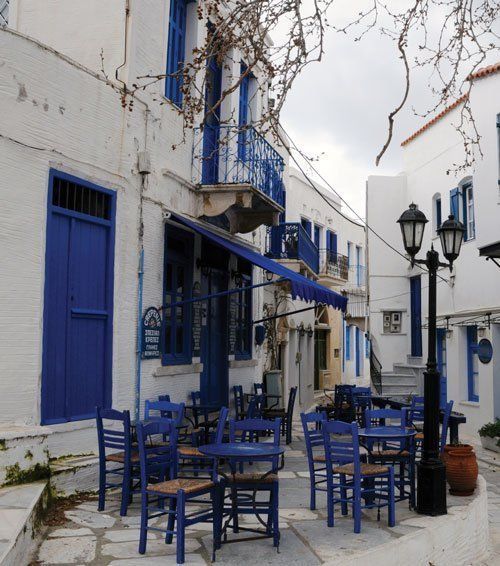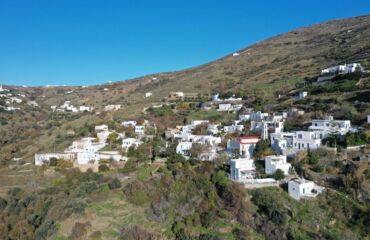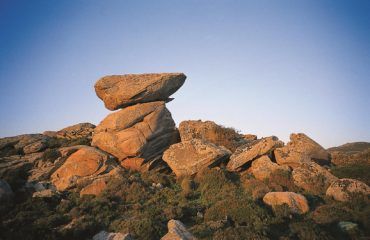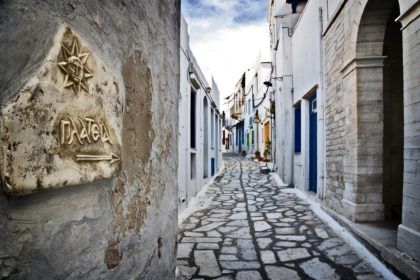
EXO MERIA – “The land of Marble”
It is a challenge to wander in the road traced by famous marble sculptors. Discover small miracles created by artists long ago and they still make us feel impressed. Meet the wild side of the nature at its best.
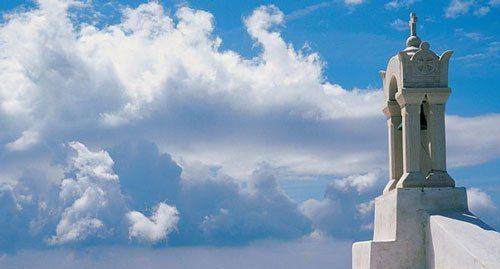
Kardiani
The first settlement in Exo Meria seems like hanging over the steep hillside of the Pateles mountain from an altitude of 240m under the protective ” look” of the Melissa top. It has a magnificent view to Syros. Kardiani is embraced of thick vegetation and countless springs welling up clear fresh water from the mountain.
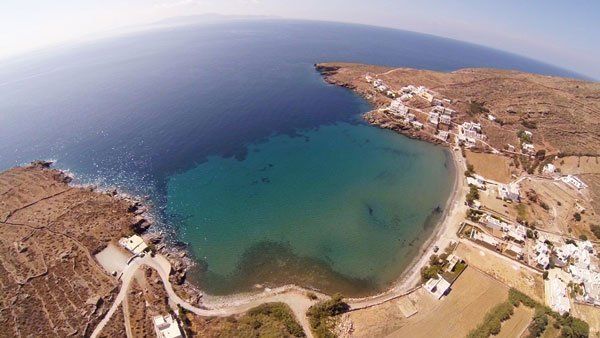
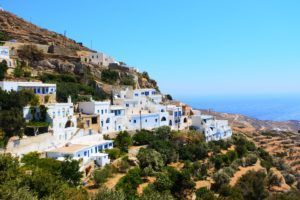
Kardiani dates back to the geometrical era, fact which is certified by the 3000 year old graves, discovered in the area. It is proud, of its paved alleys, the beautiful arcades and the marble ornaments, which made the place even more impressive. In the centre you’ll come across the Catholic Church of Holy Mary- Kioura’s birthday and as you go upwards the Orthodox Church of Trinity with the arch of six arcs which is unique in Cyclades. Going down the steps towards the entrance of the village, the marble square of Kioura emerges, with its high cypresses and the marble sculptured fountain.
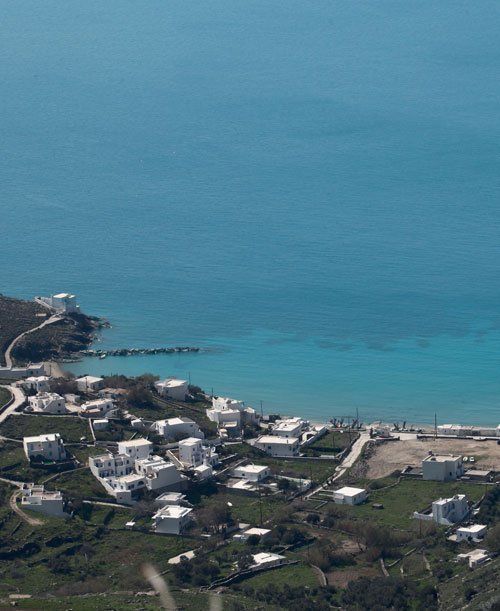
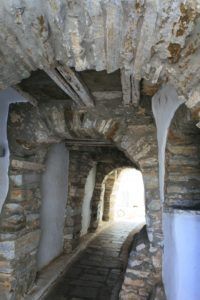
Ysternia
It is the marble sculptors’ cradle. In the “Ysternia” (SW) of Tinos, ten minutes away by car from Kaniani, you will come across the amphitheatrical Ysternia. In an altitude of 310m, on the hillside of Meroviglia over the harbor of Ysternia, overlooks Syros.
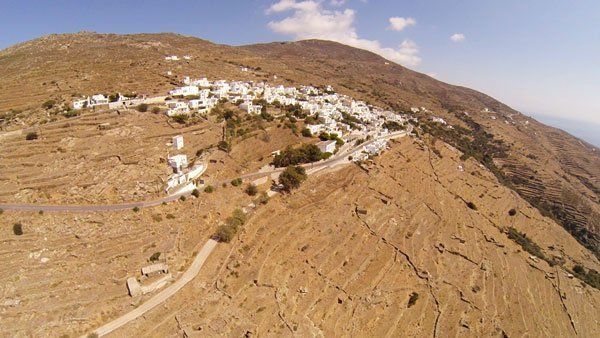
If you wander in the inner part of the village, you will see marble- made alleys, elaborate lintels of the houses with the red and blue doors and windows, many fountains, busts and sculptures. Marble prevails in Ysternia. The same holds for the great sculptors. Local artists as Fytale and Malakate bothers, Georgios Vitalis, Lazaros Lameras, Antonis and Lefteris Sohos excelled in the art of the white rock. Their artworks are on display in the Ysterinian Artists’ Museum which has been operating since 1989 in the old school, which was a weaving mill long ago.
You will come across marble – sculptured creations in various parts of the village such as at the N. Glynis square, with the old plane, the Byzantine church of Aghia Paraskevi, the Monument in honor of the piers of the 1912 and 1940. At the northern part of the village at the location Myloi, there are still many wind mills reminding the glory that Ysternia had once experienced.
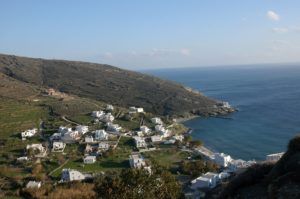
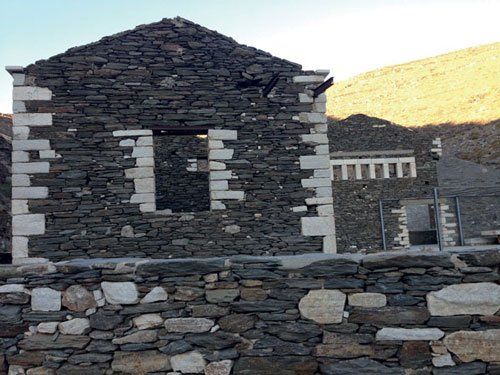
Platia- Venardados
Right before Pyrgos, the village-landmark of Tinos, you will pass by Platia, a tiny settlement in the northern side of the island. Its sights include the church of Holy Mary’s Birthday, the War Memorial for the dead soldiers during the Balkan Wars, made by Michalis Kouskouris and the Museum of ecclesiastical relics.
Venardados is our next stop, amphitheatrically built with few traditional houses and the church of Aghios Ioannis Theologos with the remarkable marble temple and the religious paintings made by Nikos Gaitis. Among the trees of the ravine, you will find the well-hidden chapel of Aghios Fanourios.
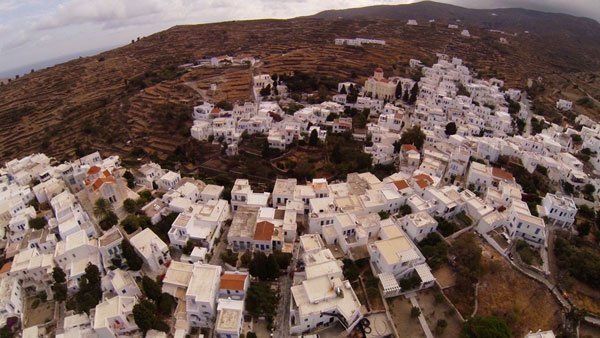
Marlas
Getting to the edgy part of the route, we come across Marlas. Built on a hill, it seems like staring at the famous Pyrgos. Among the natural beauty, the church Aghioi Anargiroi stands out with the artistic marble decoration. Over the main entrance the marble-sculpture Aghioi Anargiroi is found, with the cross in the middle and the snake around it (Asclepius’ symbol), which is unique in Greece.
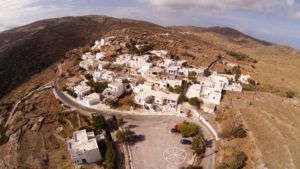
Don’t miss the Mycenaean, geometrical, domed tomb and a little bit further the monastery Kyra-Xeni and Aghia Thekla.
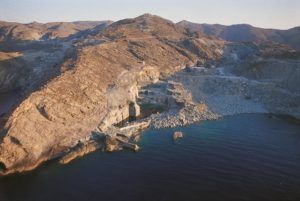
Mamados
It is the most remoted village in Tinos. Overlooking the strait Tinos-Andros, Mamados is a small settlement with traditional white houses, adorned perches and cobblestone alleys. It is worth mentioning the rich cultural activity of the progressive Marlas-Mamados association.
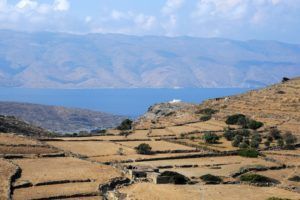
Pyrgos
The ” Mecca” of sculpting and painting. Pyrgos is the homeland of Halepas, Nikiforos Lytras and Giannis Gaitis. According to a 1571 map, Pyrgos took its name from the Venetian tower that was set in the area. Surrounded by the mountains Patela, Meroviglia, Profitis Ilias and Kaki Skala. It was built with orientation to the internal part of the island, for fear of the pirates. During the 18th and 19th century it was at its great prime while at the same time the exploitation of white and green marble deposits of the area began. Gradually the first marble craft workshops were formed and that was the key moment for the art of marble sculpture.
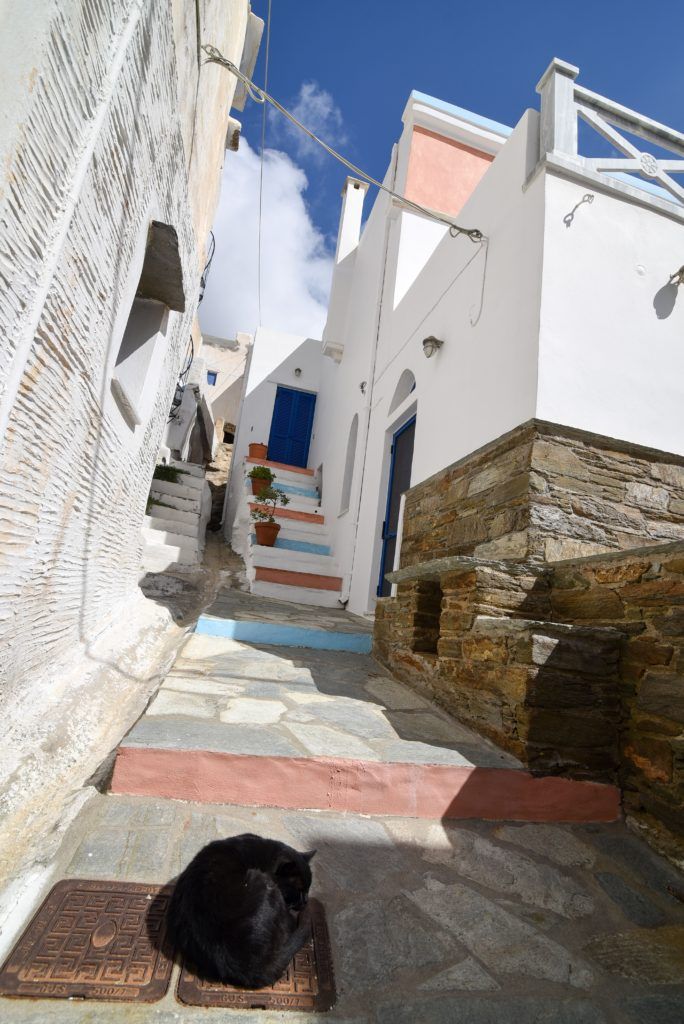
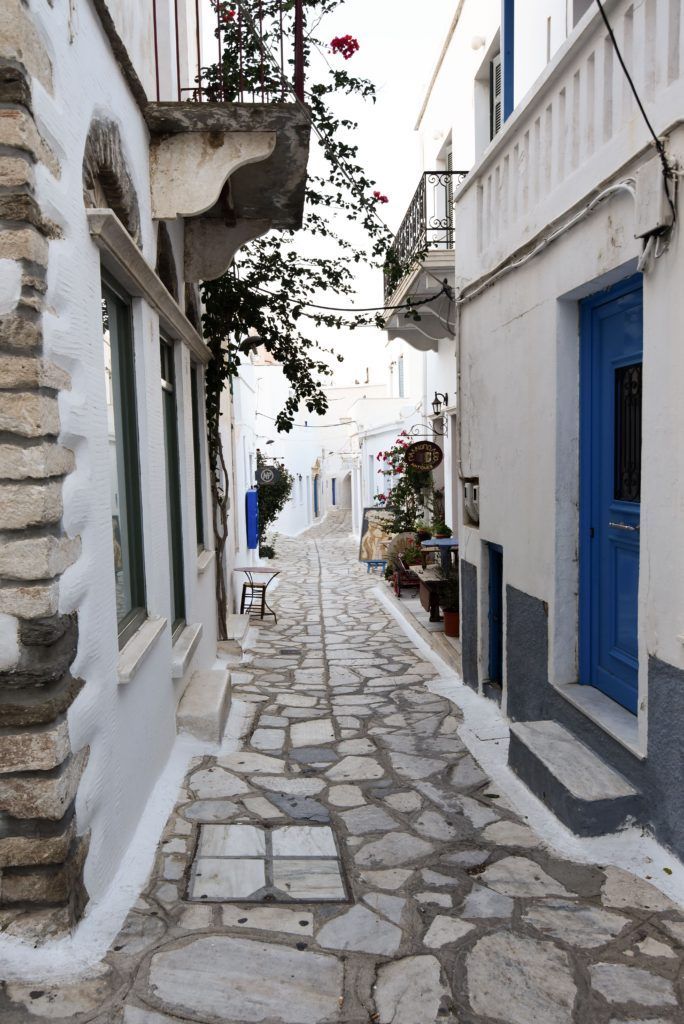
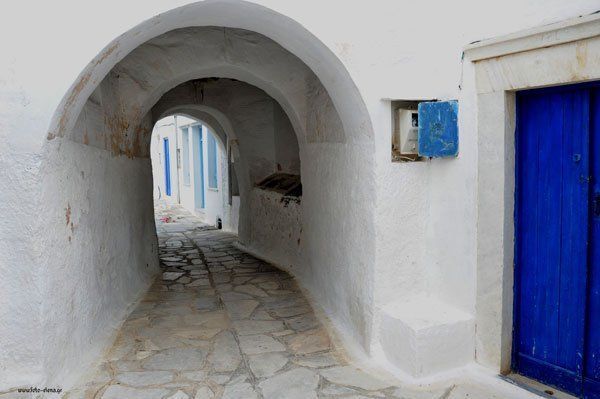
The main pebble road (Giannoulis Halepas str.) that passes in front of the Tinian Artists’ Museum and Giannoulis Halepas’ house, is more than enough to make you understand the reasons why Pyrgos is among the most beautiful settlements in Cyclades. Blazons, doorsteps, lintels, fountains, inscriptions, busts, alleys, curved tables, everything is made of marble curved by the local sculptors.
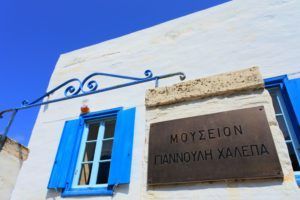
Find some time to rest in the marble paved square (of the Heroes of 1821 Revolution) under the shade of the plane, which covers the monumental fountains and taste the traditional sweets- Alexandra’s galaktompoureko ( custard filled pastry) or melachrino- in the coffee-pastry shops.
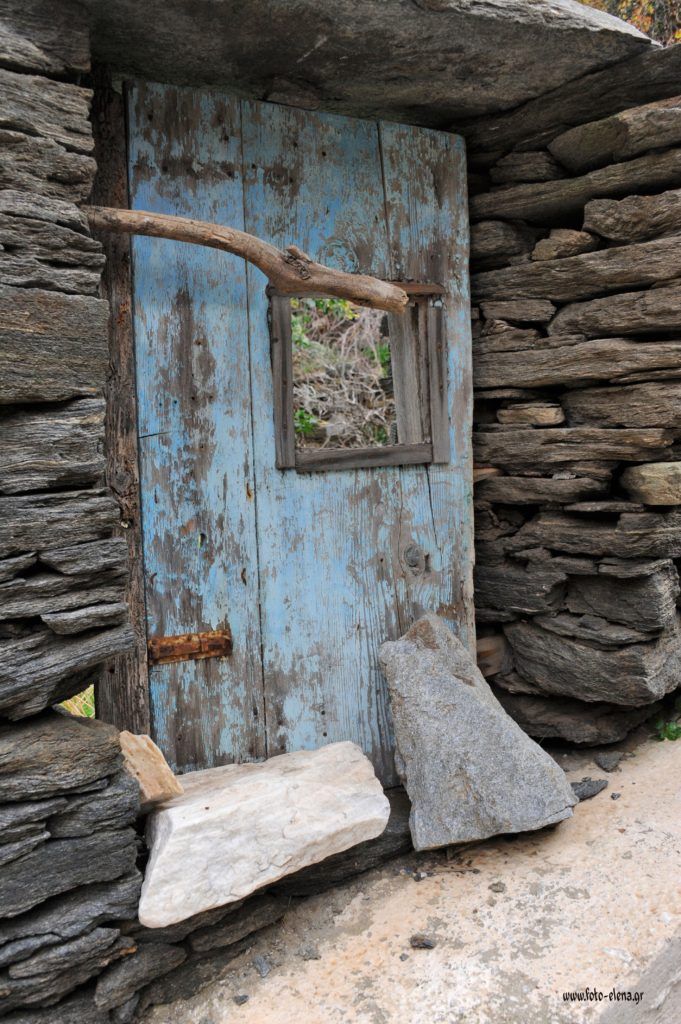
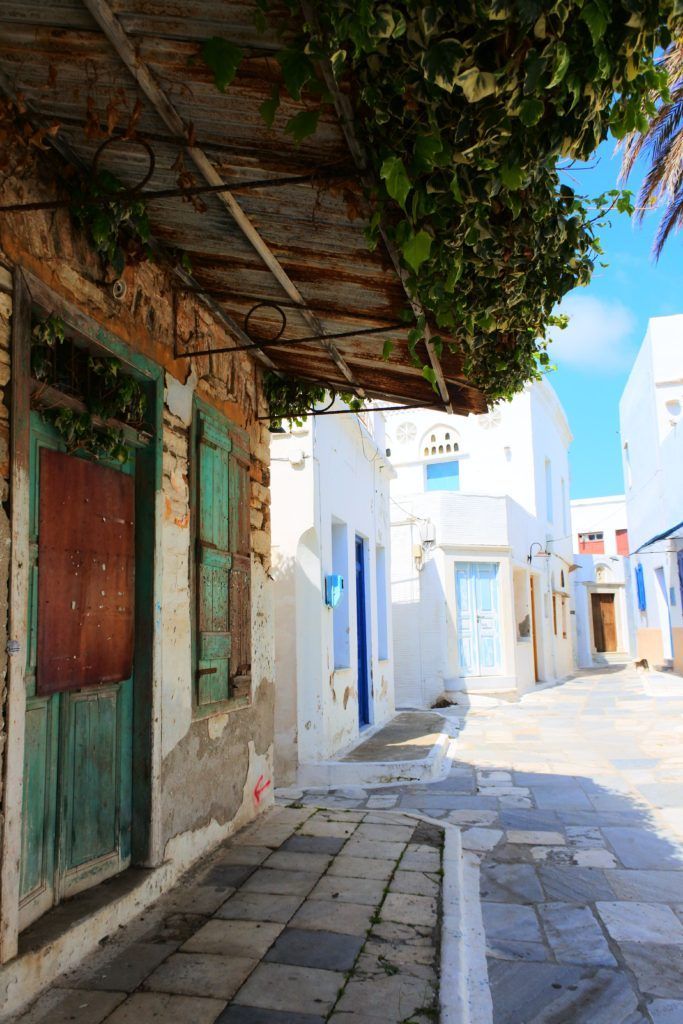
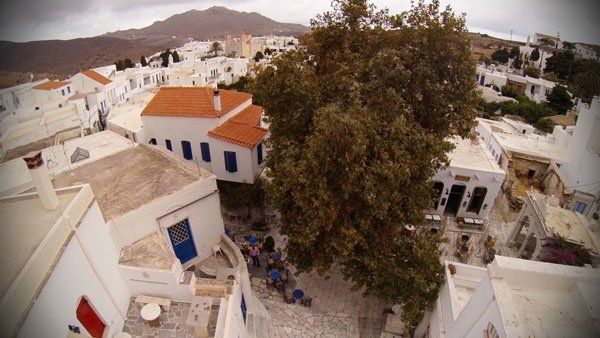
Even the cemetery constitutes a sight in Pyrgos. Tombstones with relief folk topics, imposing busts and unique grave monuments, curved by well known artists. The exhibits of the outdoor Museum are complemented by the impressive marble-built temples of Aghios Nikolaos and Aghios Dimitrios.
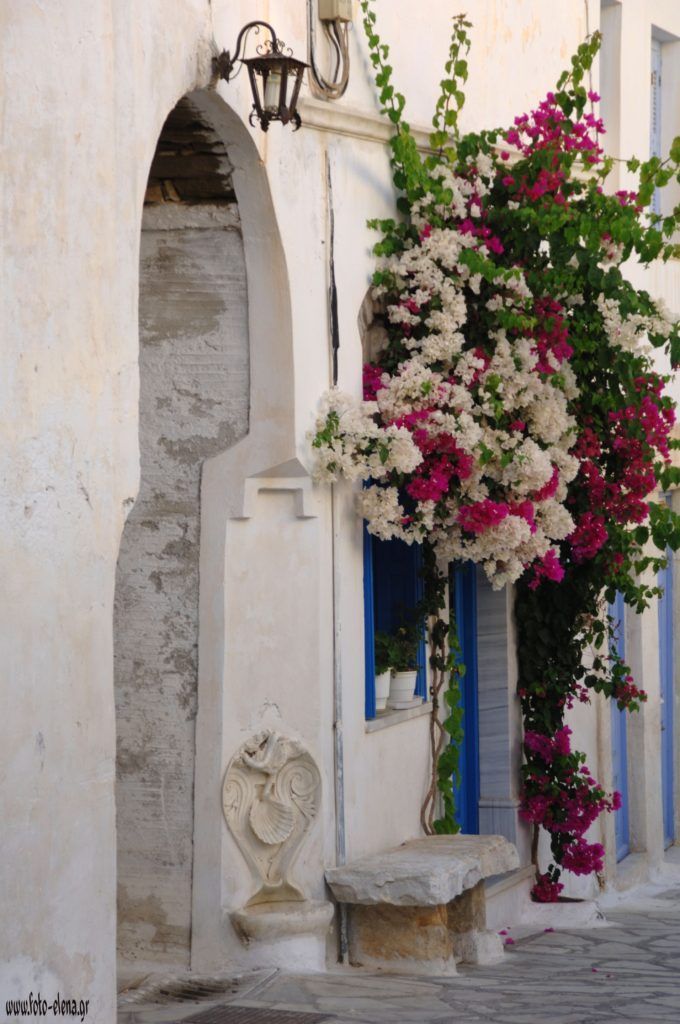
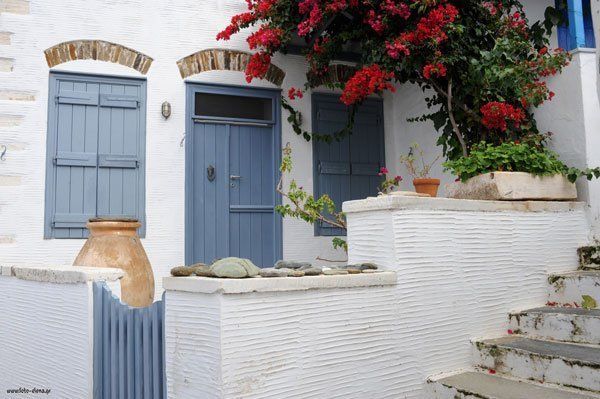
But our tour in Pyrgos does not end here. We should visit the Tinian Artists’ Museum, as it houses artworks of the “pelekitades” of Panormos like Giannoulis Halepas, D. Filippotis, L. Doukas, I. Voulgaris, G. Koulouris, G. Vitalis, L. Sohos etc. as well as the newly founded Museum of Marble Crafts of the Piraeus Bank Group
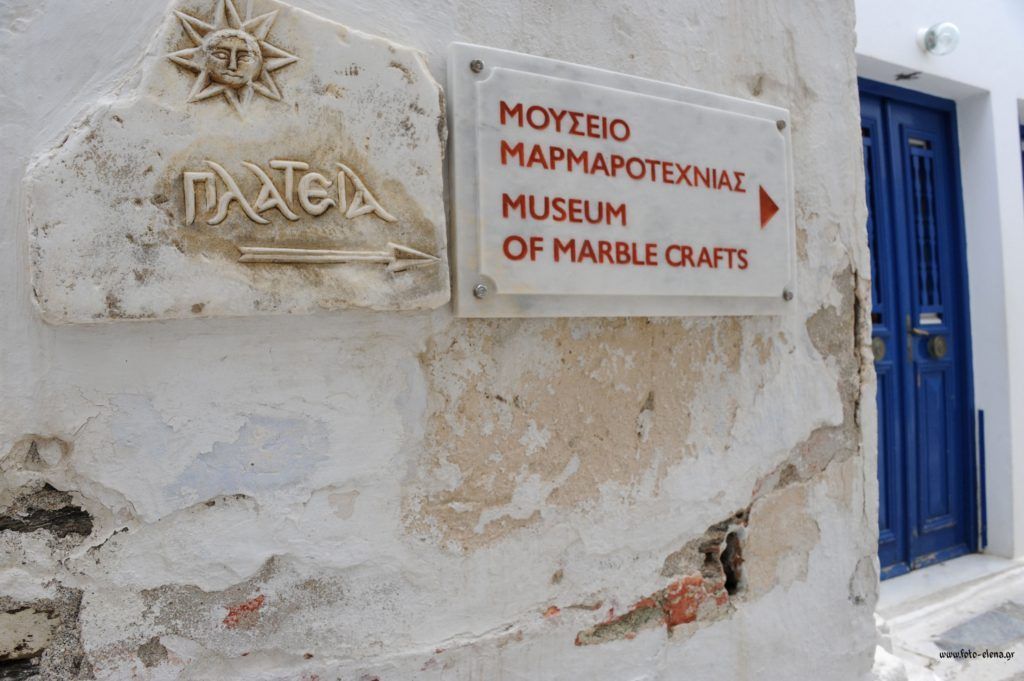
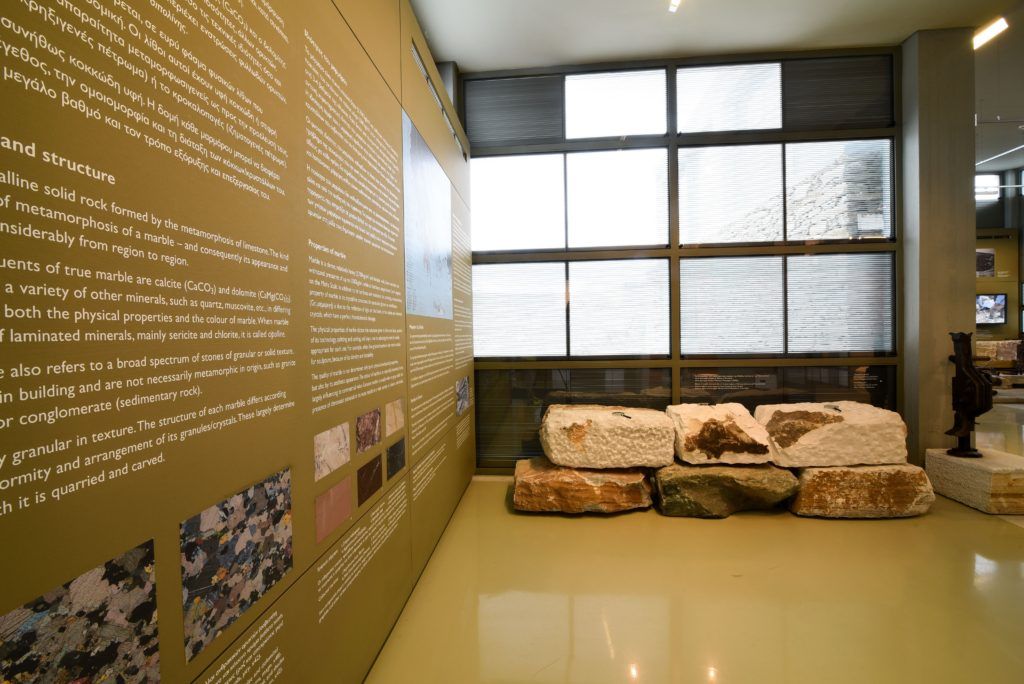
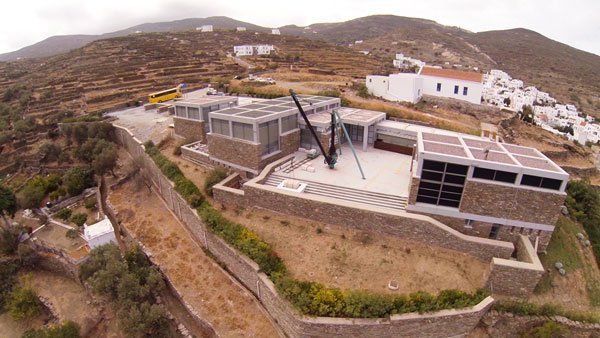
Right next to the modern building, there is the School of Fine Arts of Panormos, since 1956. The students are taught sculpture, marble sculpture, painting, design and history of Art, while two of the best graduates of each year enter the School of Fine Arts of Athens without exams.
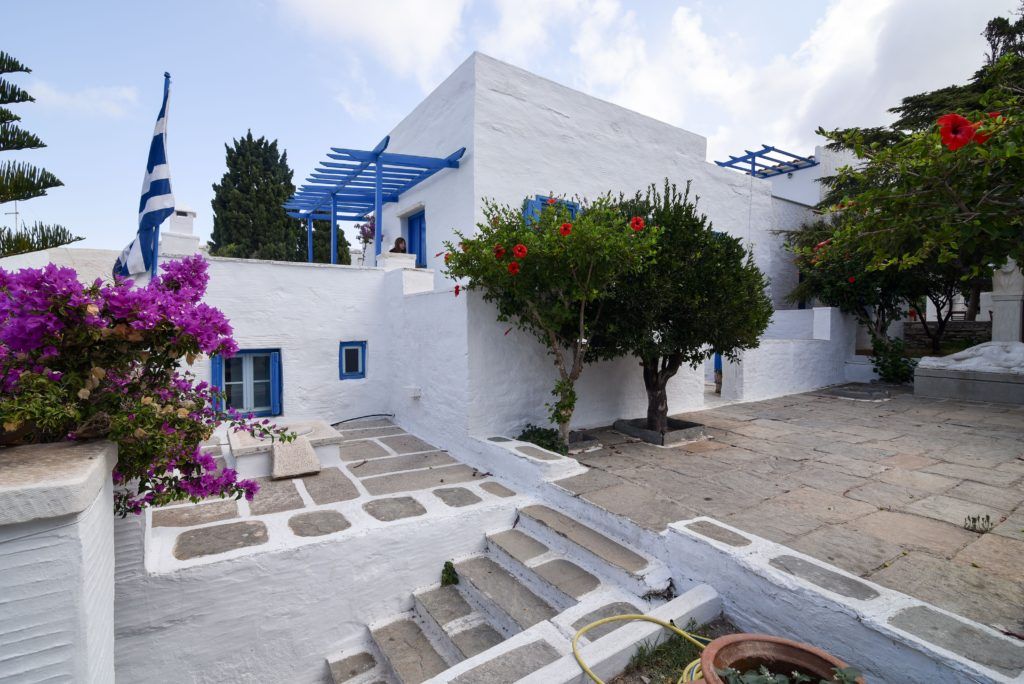
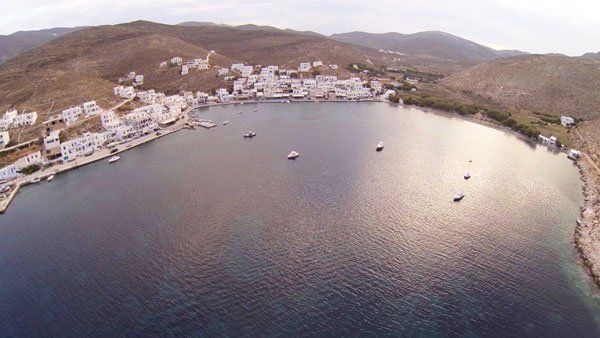
Panormos
The seaport of Pyrgos, the natural bay of Panormos, in the NE part of Tinos. In the past, it was one of the largest ports of the island & the transit mercantile center of Exo Meria. That’s cause the loading of green marble from the quarries was taking place here. In the center of the bay, the Planitis islet with the deserted lighthouse forms a postcard setting.
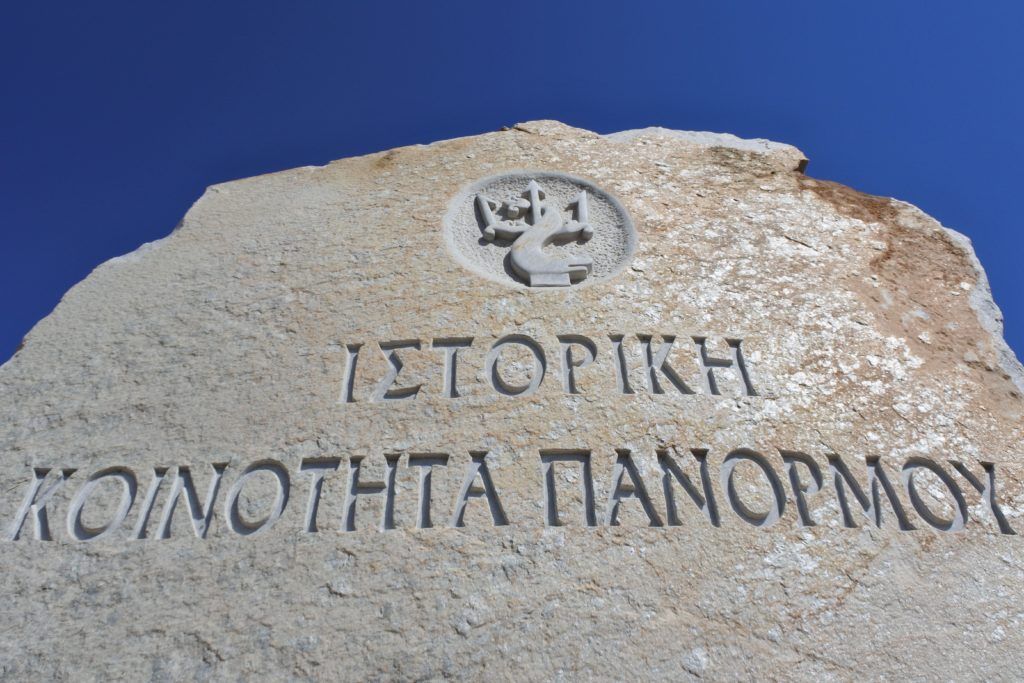
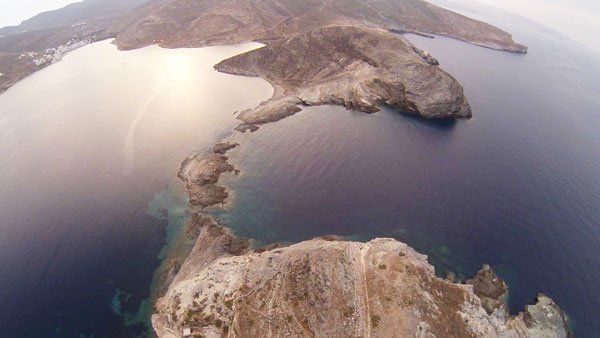
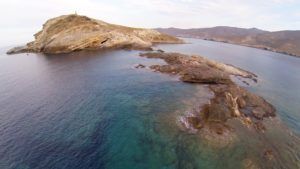
From the 70s and on, the once small fishing village started showing touristic progress. Today it is considered the most significant holiday settlement in Tinos. At the beautiful harbor, there are fishing taverns. Also cafés which you can choose from, depending on your taste.
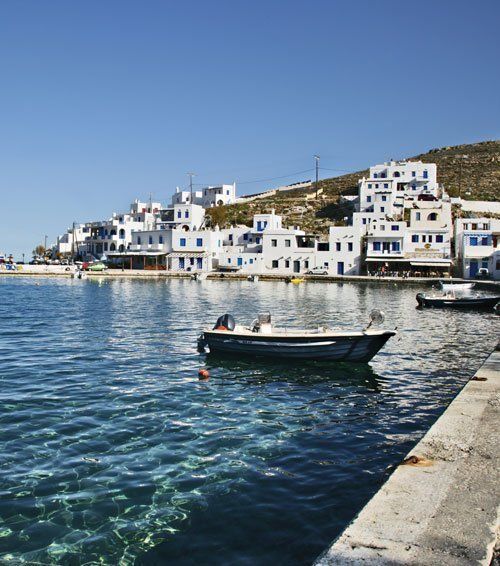
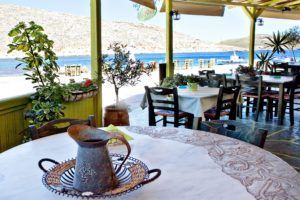
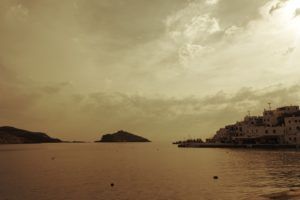
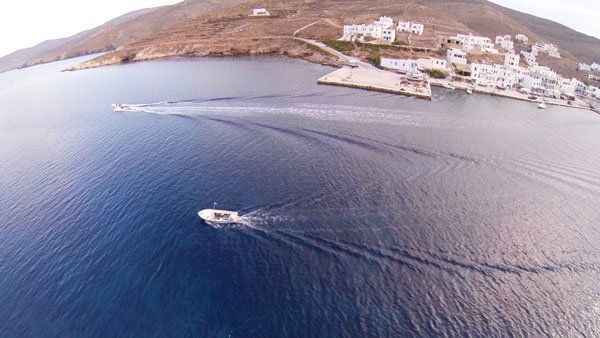
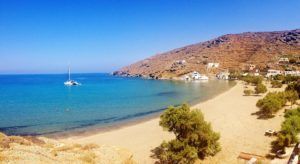


 Ελληνικά
Ελληνικά 